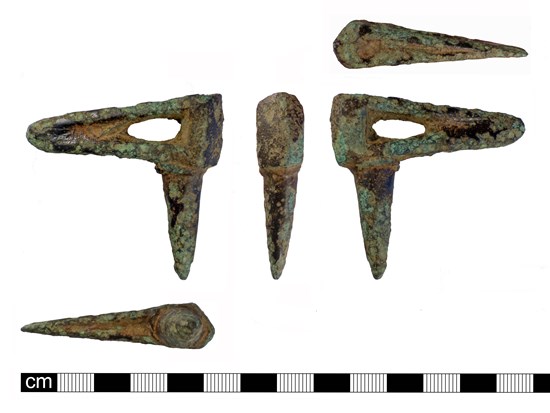November's Find of the Month is this fantastic Middle – Late Bronze Age anvil.
Bronze Age anvils are very unusual finds, probably because the metalworkers who used them were easily able to melt down broken ones to create new objects.

Almost every surface of this example would have been used to work bronze or gold, with either of the two ‘beaks’ being used to secure the anvil to a wooden block so the other could be used to shape the metal. Each working surface has a different form allowing a wide variety of shapes to be created using just this one anvil.
At the time this anvil was in use, the number and type of personal ornaments made and worn by Bronze Age people increased, and this anvil would have been used to make some of them. The metalworker who used it would have been highly skilled and was probably seen as powerful, important or even as having a religious role in society. We suspect this because the way Bronze Age tools were treated shows they had a meaning or significance beyond their use as tools, suggesting the people who made them had a role which extended beyond their skills as craftspeople.
Find a full description of the anvil here.